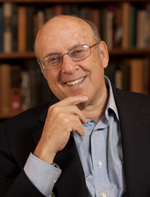
Jeffrey Carduner, Aesthetic Realism consultant, writes:
What would it mean for us truly to welcome the new, the unexpected, the surprising, in our daily lives? Is there anything in us against surprise? And what can we learn from poetry about this subject? Read “How Much Surprise—in Art and Life?,” the latest and great new issue of The Right of Aesthetic Realism to Be Known.
The commentary by Ellen Reiss begins:
Dear Unknown Friends:
As a means of placing the 7th part of Eli Siegel’s lecture We Approach Poetry Variously, I’m very happy to affirm what I said earlier in our serialization: this 1972 talk is about something great, infinitely to-be-loved, needed by every person and all nations. It is about the Aesthetic Realism explanation of poetry. While there have been other important literary critics, Eli Siegel is the critic who showed definitively what poetry is—and why it matters vitally. The reason it matters is at the very basis of Aesthetic Realism—this principle: “All beauty is a making one of opposites, and the making one of opposites is what we are going after in ourselves.”
Specifically, the lecture is about the following, which Eli Siegel was the critic to see and show: the decisive thing, the thing distinguishing a true poem from something else, is poetic music. “The words in a poem,” he wrote, “are heard musically as they fall logically.” This music arises from the passionate justice with which the writer sees the immediate subject and the world itself, for which the subject stands. We hear in the poem’s lines the structure of that world; we hear (for instance) a oneness of excitement and calm, change and continuity, vividness and nuance, clearness and mystery.
Looking at Surprise
Mr. Siegel is using as text the book Sound and Sense, edited by Laurence Perrine. In this section he is speaking about something big in the world, fundamental in art, and confusing in people’s lives: surprise.
Certainly, people want surprise. They like to open presents and be surprised by what they receive. They give surprise parties for friends. They like films with surprise endings. Yet there has been a persistent feeling of emptiness or flatness because people largely do not find surprise in life as such, in their daily lives. Two phrases of our time express that dreary non-surprise at things. One is “Same old, same old.” The other is “Been there, done that.”
Meanwhile, one reason those phrases are popular is that in their rhythm they give a little briskness, a little bounce, to dullness. They almost satirize the feeling of non-surprise. They’re not art, but they have a slight hint, a sliver, of what art is.
Art shows that there is surprise in things people sum up or yawn at. It shows there is surprise in everything.
There are three big reasons why people do not feel the surprise of things as they go about their lives:
1) A huge interference with our feeling the surprise in reality is that which Aesthetic Realism identifies as the most hurtful thing in everyone: contempt, the “disposition…to think we will be for ourselves by making less of the outside world.” To be surprised is to feel the world is having power over us—which means we’re not superior to it. So our contempt has us be against surprise. It has us feel we’re important if things outside us seem dull, not good enough to stir us.
2) The second interference is related to the first, but here the contempt is perhaps less active. People can feel they’re so beset that they don’t want to be surprised anymore. If we feel we’ve been much tossed around by things, we can go after being unperturbed, unruffled—unsurprised.
3) Then, there is this: People haven’t learned what it means to see the surprise in things, to see as an artist sees. That is one reason humanity needs Aesthetic Realism.
The surprise the artist finds—whether it’s Cézanne thinking of fruit, or Beethoven of sound, or Dickens of a London street—is the presence of the world itself in what one meets or thinks about. To see that reality’s agitation and calm are in an encounter between two apples; to find that a chord in music can simultaneously thrust and caress; to see that a London street is one street as it teems with manyness, is to see the surprise in things—and perhaps immortalize it.
They Haven’t Known
Meanwhile, artists themselves haven’t been able to have in their personal lives the surprise that is in their work. This is because they haven’t known what that surprise came from, and also what in them was against it. Let us take a person I care for very much, important as both poet and critic, Matthew Arnold (1822-88). In this TRO, you’ll see Mr. Siegel speaking of a noted poem of Arnold as representing true surprise….Read more